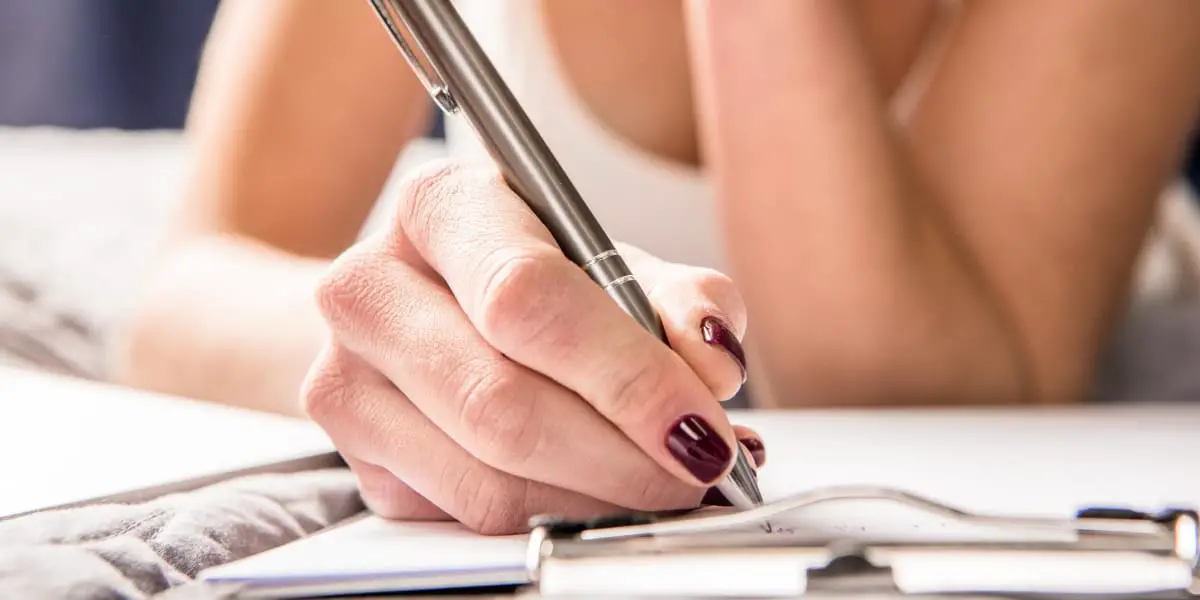Tracking your Pilates progress is a great way to stay motivated and see your hard work pay off. But how do you know what’s working and what isn’t? The great news is that you don’t have to rely on your own judgement when it comes to tracking your progress.
How do you track your Pilates progress? You record the 4 keys areas of weight, strength, flexibility and stamina. Regularly checking and recording each area allows you to see how Pilates is changing you over time.
When you track your progress, you will be able to objectively see if your efforts are paying off. If you’re not tracking your progress, you could easily waste months or years and not realize that your efforts aren’t actually paying off.
Let’s take a closer look how we measure each of these aspects.
Key Areas to Track
To know we are making progress we need to be aware of our start point and then work out how we are going to track or measure our progress. My work with Pilates clients has identified four areas they desire progression:
- Weight loss
- Building strength
- Improve flexibility
- Increase stamina/ energy levels
First, consider why making progress in any of these areas is important to you. Questions for you to consider:
- Is your desire to make progress based on your own aspirations or those of others?
- Are you aiming to make change because you want to or because you feel you should?
- Are you unhappy or unfulfilled right now? Is it for health reasons?
- If you make the progress you are aiming for how do you think it will make you feel, what will it give you?
- Are you going to share your goals and progress with anyone else and if so, who?
If you do plan to share your goal and progress then share it with those who will support and understand your journey.
How to track weight loss…with or without scales
It would be easy to assume that stepping on to scales measuring your weight is the perfect start point for tracking your weight loss or gain. If you think it is as simple as this, think again. Yes weighing yourself is one indicator and a way of measuring progress, its also easy to do and probably the most accessible.
However, it’s an unreliable way of tracking progress as our weight fluctuates so much throughout the day, week, month as a result of so many factors. The scales measure everything, your bones, muscle, water, fat. A fluctuation in your weight could be down to loss of water or water retention and there is no way to know for sure if you are losing body fat.
If you do weigh yourself then aim to do it no more than once a week, ideally on the same day of the week and roughly at the same time of day. First thing in the morning is ideal, after emptying your bladder. Our weight fluctuates so much throughout the day so don’t be tempted to jump on the scales again in the evening as you won’t get a true reading! Choose to wear a similar outfit every time you get weighed.
Its worth noting that a women’s weight fluctuates so much throughout the month depending on her hormone levels hence only weighing yourself once a week is a good idea. Women may see a pattern over time that on the weeks their weight appears to increase it’s linked to where they are in their hormone cycle!
If you know that stepping on the scales is a trigger for anxiety then why put yourself through that? Do we allow a number on the scales to define our worth or happiness?
Put the scales away if this resonates with you and be kind to yourself. There are other ways to map your progress.
Body measurements (with a tape measure) give you a good idea of what is really happening with your body. Muscle weighs more than fat, so whilst you may be building muscle and losing fat this may not be reflected on the scales. By measuring inches a person can get positive feedback that the hard work is paying off, changes the scale couldn’t discern.
You may be focused on specific area(s)of your body i.e. your waist or thighs. This method will provide important information on progress especially as we lose fat in different areas in a different order, so whilst you may not be seeing changes in your thigh measurement you may in your waist measurement indicating that your are in fact making progress.
Taking measurements can give you the reassurance that you are making progress, that you are losing fat or gaining muscle even if you are not gaining or losing where you want to just yet. It does take time to shift weight or build muscle so be patient and see every change as well-earned progress.
Wear fitted or no clothing when you measure yourself. Take every measurement at least twice then work out the average of these measurements.
If you lose inches without losing weight that’s a positive sign that your are losing fat and gaining muscle, making PROGRESS!
How to take your body measurements
There are five key areas of your body that you should measure:
- arms
- chest
- waist
- hips
- legs
It is important to take the measurements in the same way each time, being consistent is key. Take each measurement 2-3 times then work out the average.
How to Measure Your Arms
To measure your arms, put your thumb on the opposite shoulder and stretch out your pinkie to find the centre of your upper arm — that’s where you want to wrap the measuring tape. Repeat on the opposite arm, recording measurements for both the left and right arm.
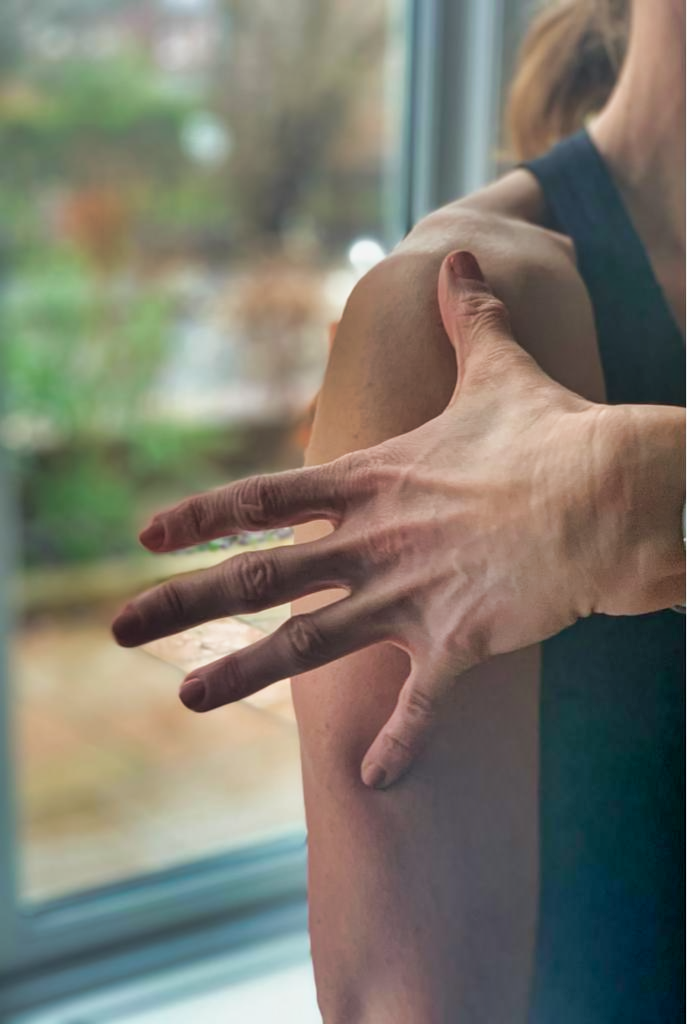
How to Measure Your Chest
Moving on to measuring your chest. Wrap the measuring tape around your chest at the nipple line with your arms down by your sides.
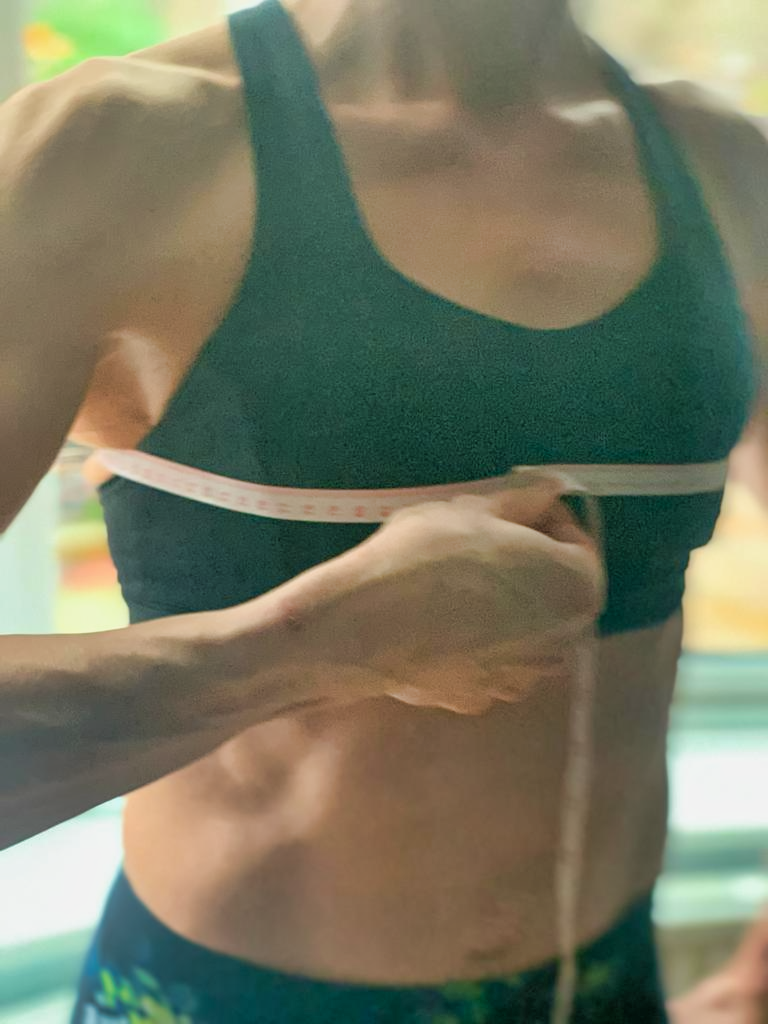
How to Measure your Waist
You will need to wrap the measuring tape around your waist, using your belly button as the centre point for getting your waist measurement.
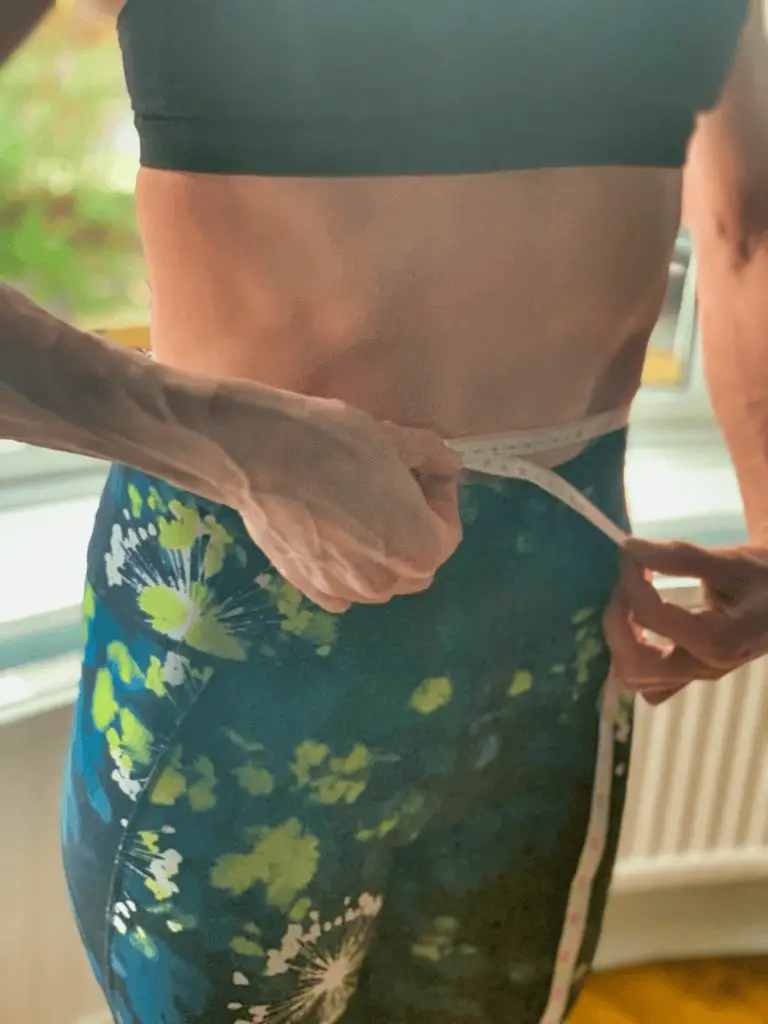
How to Measure Your Hip
Stand with your feet together and wrap the tape around the widest part of your hips, then record your hip measurement.
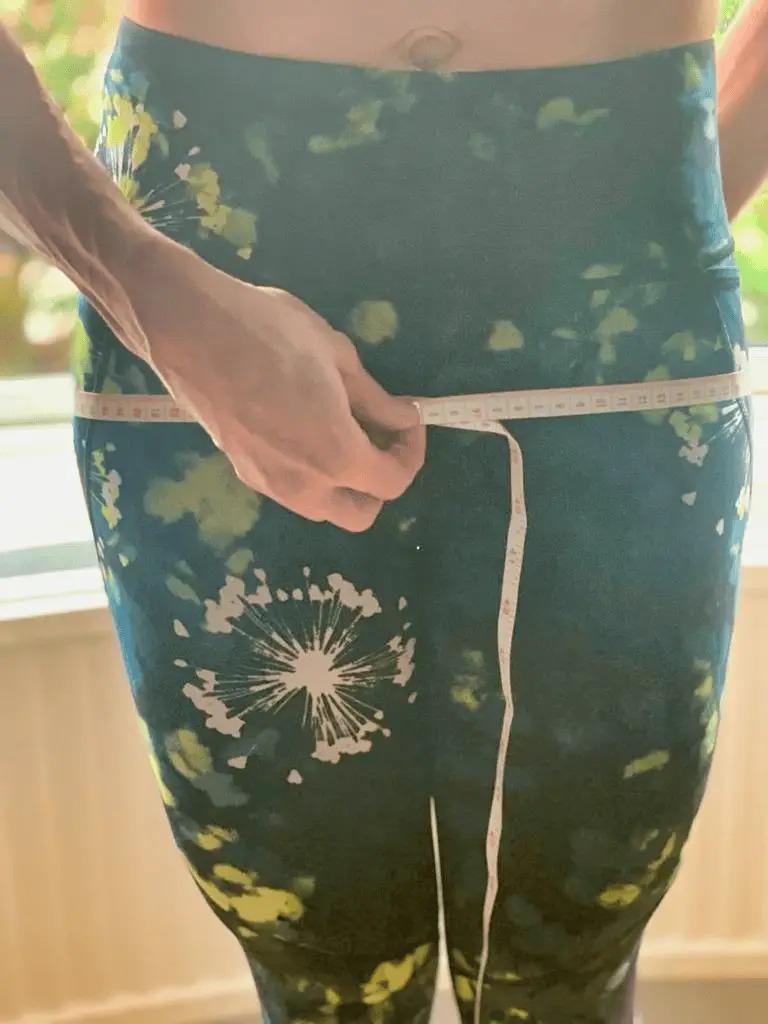
How to Measure Your Legs
Finally to measure your leg put your pinky on your knee and stretch out your thumb to find the centre of your upper leg (your quad). That’s where you want to wrap the tape.
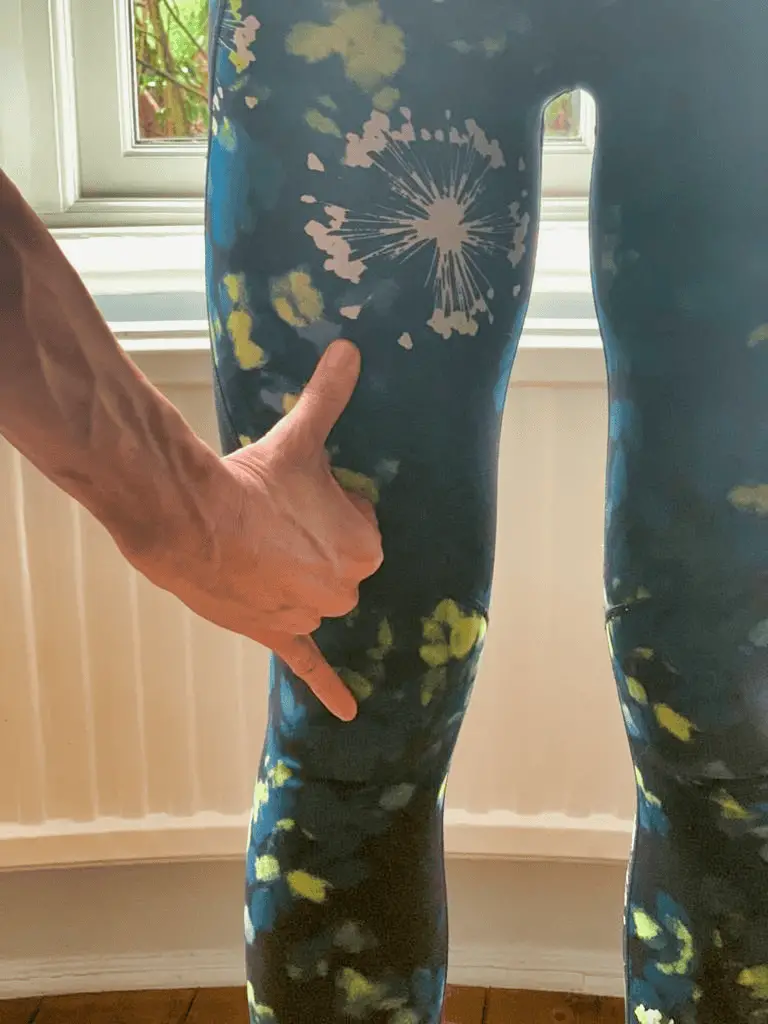
Record all the measurements and make a note of the date and time of day. I would advise you do your measurements first thing in the morning each time.
Photograph your progress
For a more visual measurement take photographs of yourself when you record your measurements. Are you cringing at this suggestion? The photographs are for you, you don’t have to share them within anyone, unless of course you want to.
Research has shown keeping a photo diary keeps dieters motivated and more likely to achieve their target weight, the same principle would be true for your fitness goals and is a fantastic way of seeing changes in your body in a more meaningful way than measurements.
How to take photos to track progress
- Location: Find an area you can replicate the same photo repeatedly, ideally the only difference should be you, allowing you to quickly spot the difference. If possible use the same background every time and remove any clutter.
- Clothing: Ideally you would take the photos whilst in your underwear as this will allow you to see the physical changes a lot easier. If you’re not comfortable with this wear snug fitting gym clothing, don’t wear anything baggy.
- Time of day: Take photos at the same time of the day, our bodies change throughout the day so taking a selfie around the same time each day not only means you’re comparing like-for-like but it also helps you create a habit of taking snaps and means you’re less likely to forget.
- Lighting: If possible (and this is easier in summer months!) stand near a window and take advantage of natural lighting rather than indoor lighting, which often creates shadows and can distort your progression.
- Pose: Find a position you can recreate for every photo. If someone is taking the photo for you make sure they’re taking it from the same position so you’re the same distance from the camera every time. Tip: use an item in the shot as a reference point, are you stood next to a chair, does the photo include the picture behind you, using these visual clues means you can quickly get identical shots
- Angle: To monitor changes its best to take a few photos from different angles, but strike the same pose in each angle. You might take a picture straight on, from the sides, slightly turned, just remember to take the same set of angles next time you’re recording measurements.
Follow these tips and you’ll build up a bank of photos you can look back on to see how you’re changing. Don’t be discouraged if the photo you take today looks the same as the photo you took last week, remember this is a long term project. Taking photos over a long period allows you to see how far you’ve come.
How to track strength
We build strength when we perform any weight bearing exercises. They enhance your physical health by building strength and joint mobility. Tracking strength isn’t as straight forward as tracking weight, first let’s understand how and why we should build strength.
Building Strength
Weight bearing training is essential for building and maintaining healthy bones and includes any activity that works your bones and muscle against gravity, with Pilates offering the perfect combination of these two things. During weight bearing exercises bones adapt to the impact of weight and the pull of the muscle by building more bone cells, as a result of which the bones become denser and stronger.
In addition to improving strength and joint mobility W.B. exercises can reduce your risk of fractures as well as your risk of conditions such as osteopenia and osteoporosis.
To sustain the strengthening associated with weight bearing the intensity, duration and amount of stress applied to the bone should increase over time. The best exercise to increase bone strength is one that forces you to work against gravity with either your own body weight or with some sort of resistance. Adding exercises for upper and lower body to fully maximize your bone strengthening efforts.
It’s difficult to talk about strength without talking about stamina. Stamina is the strength and energy that allow you to sustain physical or mental effort for long periods. If we are to relate them to Pilates then we need to refer to two of the six principles that truly make Pilates the unique form of exercise that it is, ‘Control’ and ‘Precision’.
Every Pilates exercises is ideally to be performed with full body control, requiring control of both body and mind.
Each exercise should be performed with ’Precision’ and focus. When you work with precision it affects the muscles that you work and the effectiveness with which you work them. Failing to work with precision will reduce the effectiveness of the Pilates method.
In Pilates we work smart, we only do 8-12 reps rather than 30 or 40. When done right, there isn’t the need for more. The focus is on getting that ‘control’ and ‘precision’ which will lead to increasing strength and stamina.
Measuring Progress
Tracking your progress can be as simple as noting which exercises challenge you and recording how well you do them over time.
To measure your strength building progress keep a log of how many reps you are able to do.
For example, you could aim to increase the number of reps you can do when attempting ‘The Hundred’. To begin with you may struggle to get to 30 beats before needing a rest, progressing can be measured by comfortably getting to 50 then 70 beats etc.
When you’re able to do ‘The Hundred’ with your feet on the floor a progression would be to have your legs in a double knee fold position for 20 reps then building unto to 40 reps etc.
Just take a moment to think about which areas you want to build strength and you will then record progress in those areas.
Test Flexibility
Many prospective clients begin their Pilates journey looking to become more flexible, more mobile or a combination of the two! They will talk about having a stiff back, aches and pains in knees and hips and feeling generally like their mobility is declining as they age. They want to move more freely, with less hesitance, without having to support the movement, such as holding onto something to get in and out of the bath.
Pilates is a great way to improve the flexibility of your muscles and the mobility of your joints. Regular practice not only relieves aches and pains but will make every movement feel easier from putting on your socks in the morning to getting out of your chair at the end of the day.
Mobility vs Flexibility
Firstly let’s ponder on the difference between Mobility and Flexibility, two terms that are used interchangeably but mean very different things.
Both play an important part in health and fitness and require certain techniques to develop them and so it’s important to understand how they differ.
Mobility refers to the range of motion around a joint. It relates to joints and their ability to move actively through their full range of motion. Think of lifting your leg in the air to a 90-degree angle and bringing it back down again. That’s active mobility.
Flexibility is the ability of our connective tissues so not just our muscle(s) but also our tendons and ligaments to lengthen passively through a range of motion. Flexibility is very important, if our muscles don’t lengthen (aren’t STRETCHY) then we will struggle to achieve the full range of movement within a joint.
Think of flexibility as the ability of a muscle to stretch & mobility as the strength to hold that flexibility. For optimum mobility we need good flexibility, but we also need control and strength.
Let’s demonstrate the difference with a hamstrings example: People often claim to have tight hamstrings, they might attempt to touch their toes and find they are unable to do so. They feel this big pull in their hamstrings and blame those muscles for limiting their mobility.
This same person then lies on their back and has their leg passively stretched into hip flexion with the knee extended (a typical hamstring stretch). Here they continue to feel the same stretch in the hamstrings, but instead of being limited, their leg has normal range (about 70 degrees).
This is a classic example of how someone that demonstrates normal, or even good flexibility may not have the necessary mobility to get their body into certain positions.
In a case like this, stretching your hamstrings would not help improve your toe touch. You would need to learn how to improve your active mobility, stability, and strength of your spine and hips in order to get into this position.
Testing your mobility vs flexibility.
Here are two quick tests of your mobility and flexibility.
Test 1:
Sit on the floor, your legs are straight. Do a forward fold and try to touch your toes. This exercise is testing your flexibility.
Now I want you to stand up, raise one leg in the air & try to touch your toes. This is mobility.
When seated you may have demonstrated good flexibility but when standing you may or may not have the balance, control, strength and muscle coordination to execute the second movement, this is your mobility.
Test 2:
Raise your knee toward your chest. Your hip mobility is defined by how far your knee travels without assistance.
Place your hands on your knee, and actively pull it closer to your chest. This stretch shows your overall flexibility in the hip.
Learning the difference between mobility and flexibility allows you to monitor both aspects and see how physical exercise is impact both.
Monitor Energy Levels
Energy is a very subjective feeling that fluctuates throughout the day. Many of my clients talk of the tremendous sense of well-being they are left with after a Pilates class with one saying it left her feeling a “strange but wonderful combination of relaxing and powerful”.
To measure your energy levels think about a 1 – 5 scale, with 1 being no energy and 5 meaning you’re bursting with energy

Record how you’re feeling at least 3 times a day to see the impact a workout has. Record how you’re feeling depending on when your class/workout takes place:
| Morning class: – On waking up – 1 hour after workout – Midday | Midday class: – Before workout – 1 hour after workout – Evening | Evening Class: – Before workout – 1 hour after workout – Night |
We’ve covered a lot of ground here and if you’ve made it to the end I’m impressed and thank you for your time. In today’s society there is very much an emphasis upon always progressing, pushing ourselves to move forward and there is nothing wrong with that.
I have realized that not all progress is measurable, that while sometimes it can come down to how we look or perform how we feel also plays a HUGE part in whether we persist and continue to do something.
If it feels good, we enjoy it, it makes us happy, isn’t that a good enough reason for YOU to do it?

